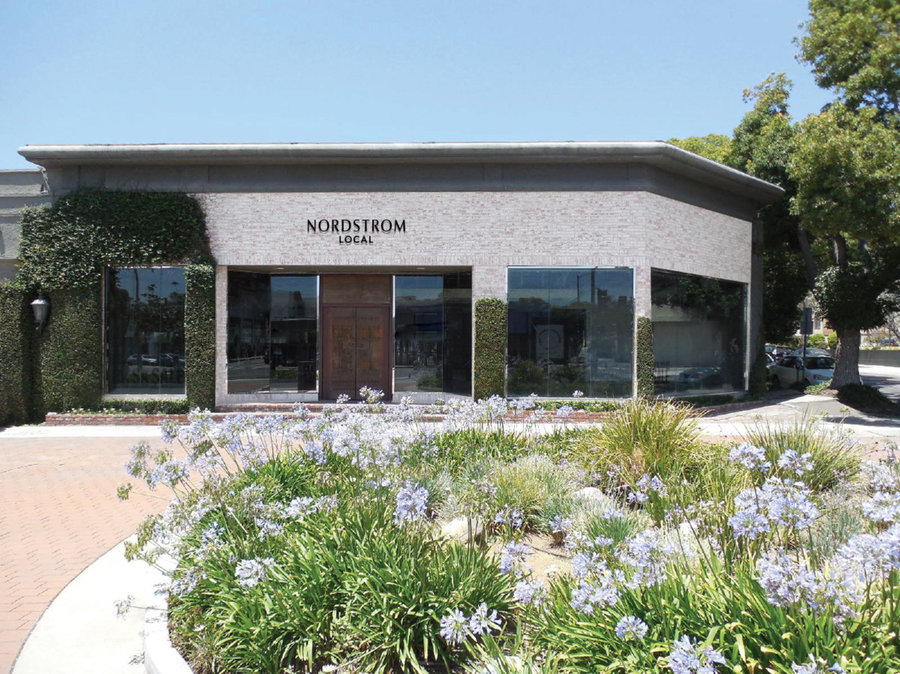Nordstrom, long the Emperor of department store fashion, has announced it will soon open a store with no clothes. Instead, the new store—dubbed Nordstrom Local—will follow a Bonobo’s model with in-store interactions and experiences feeding online orders: stylists and staffers will help consumers browse displays and fitting-room samples, guide them through their digital catalogue, and then help them place their order online for at-home delivery.
The chain, which operates 121 department stores and an ungodly number of discount Nordstrom Racks, has no doubt read the writing on the wall at the local mall. Traditional department stores and mall-based retailers are falling like baggy pants without a belt, losing out to e-commerce giants like Amazon, fast fashion houses like H&M, and second-hand startups like Grailed and ThredUp.
With the move, it hopes to stay one step ahead of today’s rapidly-evolving consumer. Or at least keep pace with them. Their statement certainly had a bit of handwringing, with SVP of Customer Experience Shea Jensen offering “As the retail landscape continues to transform at an unprecedented pace, the only thing we know that remains constant is that customers continue to value great service, speed and convenience.” Jensen, who oversaw the initiative, continued, “We know there are more demands on a customer’s time and we wanted to offer our best services in a convenient location to meet their shopping needs. Finding new ways to engage with customers on their terms is more important to us now than ever.”
The Omnichannel Writing on the Wall
So, what exactly are these new ways of engaging customers? The first has to do with size and scale. The concept location, which opens on October 3 on Melrose in West Hollywood (Hi, Amanda!) will be roughly 3,000 square feet—for reference, the typical Nordstrom department store is about 140,000. We’re talking the difference between the kiddy pool and what Michael Phelps swims in, the difference between a size 6 in 1960 and a size 6 today.
The locations will be service-oriented. In fact, items in the store are not for sale (nothing in the store is for sale: Ebay store, anybody?) but rather represent offsite merchandise. Personal stylists will offer a wide range of services, from a quick tip for dressing your best (for example: pleats have been tamed and are back!) to brand-specific fittings, all the way to custom building an entirely new wardrobe. Onsite dressing rooms will center around a central hub where customers can socialize while drinking (California sourced) wine and beer, espresso beverages, and cold-pressed juice. They will also offer on-site tailoring and alterations as well as manicures.
With their online sales already up 20% this year, they are doing their best to make a seamless transition to their best future self, and these locations will become a central IRL hub for Nordstrom’s expanding omnichannel business. Within Nordstrom Local, customers will be able to easily return items they ordered online, or just bring them in for a couple of quick alterations—when the tailor is done, the item will be shipped to them at no cost. The Nordstrom mobile app will allow in-store customers to chat with in-house stylists and place their own orders, meaning that customers can order items at home and have them shipped to their Local store, or vice versa.
And, most importantly for Nordstrom, these locations can quickly scale up and down so long as they operate within a certain distance of their distribution centers. The cost savings and rapid flexibility of these initiatives will position them to keep pace with their customer bases’ changing shopping practices, or at least to catch up quickly.
What the Retail Market Research Says
Nordstrom is essentially combining the best of online and in-store into what they hope will be the ideal omnichannel experience. Consider that, according to our 2017 Retail Market Research Report, fashion shoppers favor online for product availability, pricing, and variety of selection but believe in-store shopping has the edge when it comes to customer service and returns/exchanges. Nordstrom is obviously very aware of these trends and, with Nordstrom Local, rolls these all together, giving customers access their vast online inventory with the ease and familiarity of in-store customer service. It it’s about keeping pace with today’s customer, and this is a huge step in that direction.
Fashion shoppers also indicated in our recent retail report that their two primary motivations for venturing into a physical store had to do with immediacy—they wanted to quickly confirm the quality and fit of the garment, and walk out with it in their hands. Nordstrom Local will offer customers the opportunity to inspect, try on, and roll around in display garments, and for customers who place their orders before 2pm, they guarantee same day delivery.
Let’s all say it together: in fashion, one day you are in and the next day you are out. Well, that goes double for fashion retail, and with Nordstrom Local, they’d really like to ensure they’ll never go out of style, that what ever their customers' fashion future holds, they can be a central part of it, and that they’ll never be met with that Klum kiss of death: Auf wiedersehen.
Download the complete 2017 Retail Industry Report.


